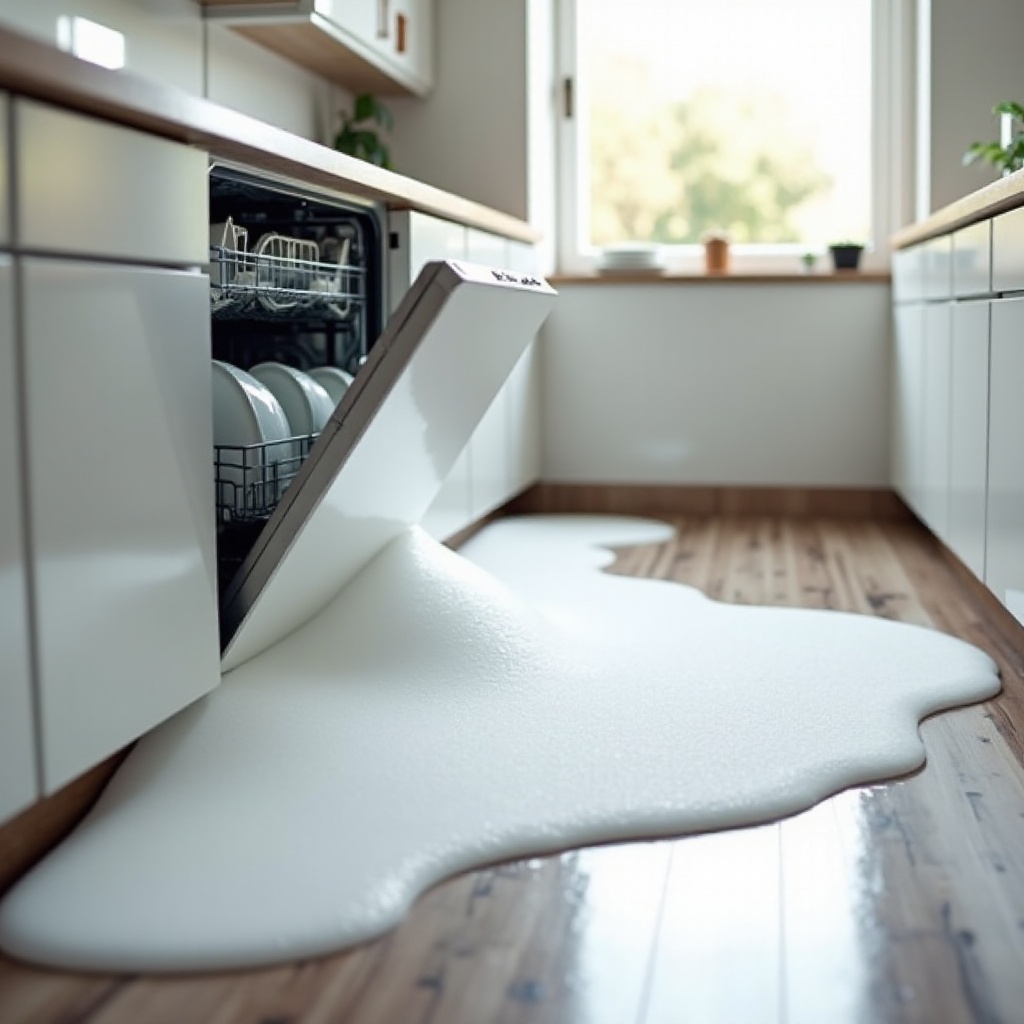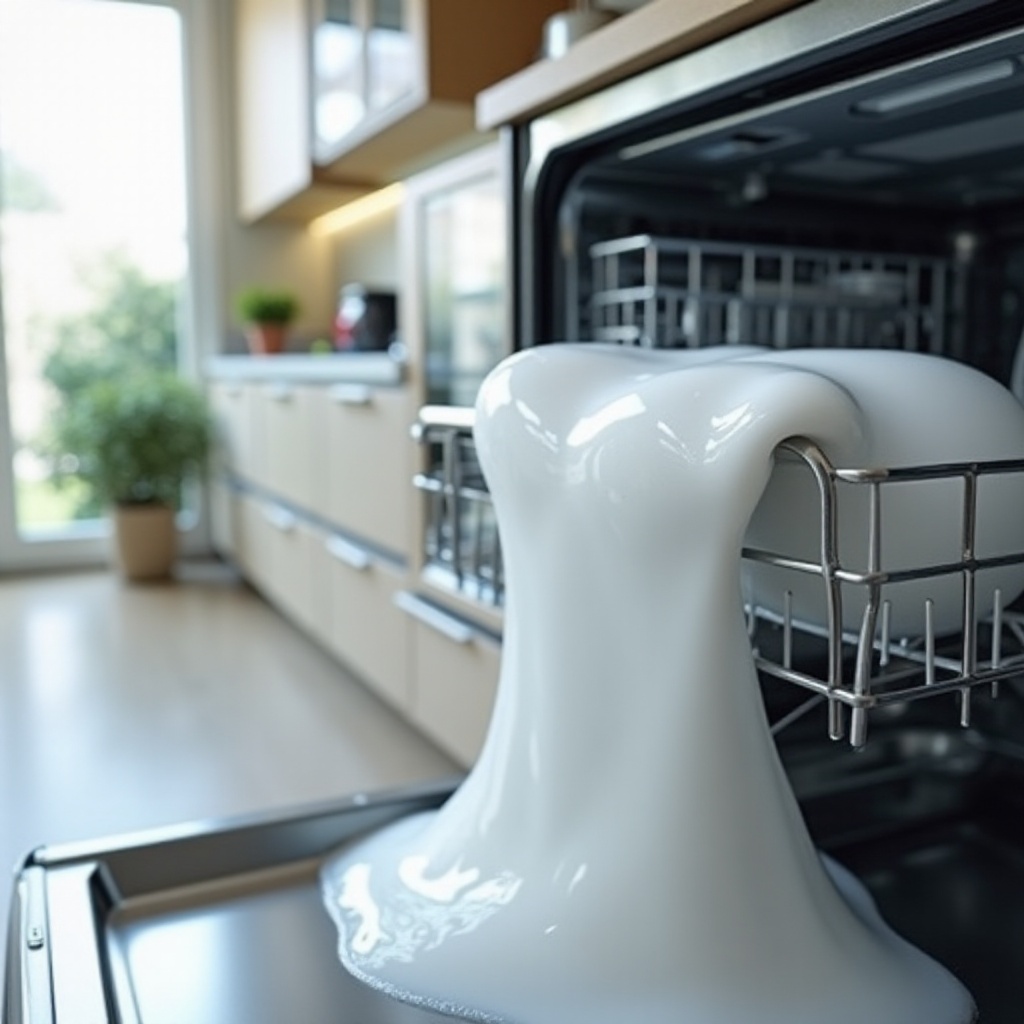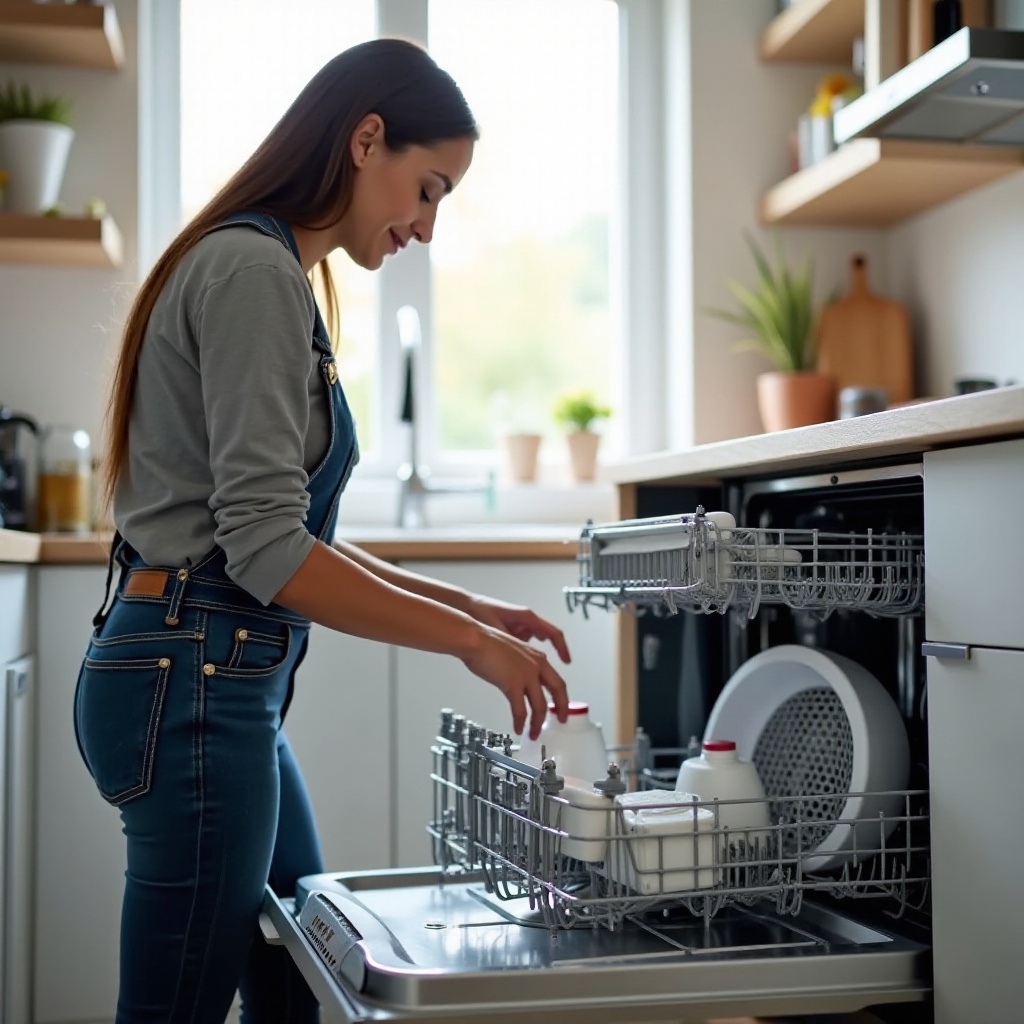Introduction
Dealing with dishwasher foam overflow can be a frustrating and messy experience. This guide will help you understand the causes of foam overflow in your dishwasher, provide immediate steps to fix it, and offer preventative measures to ensure it doesn’t happen again. By following these tips, you can keep your dishwasher running smoothly and efficiently.

Understanding Dishwasher Foam Overflow
What Causes Dishwasher Foam Overflow?
Several factors can lead to foam overflow in your dishwasher. One common cause is using regular dish soap instead of specially formulated dishwasher detergent. Regular dish soap creates excessive suds that the dishwasher cannot handle.
Another cause is using too much detergent. Even if you use the right type, using more than the recommended amount can lead to an overflow of suds. Additionally, water quality and temperature can affect how detergents foam. Hard water, for instance, can increase suds production.
Dishwashers also can have mechanical issues. Faulty seals, clogged filters, or malfunctioning rinse aid dispensers can contribute to foam overflow. Identifying the root cause is the first step towards a solution.
Common Signs and Symptoms of Foam Overflow
Recognizing the signs of foam overflow early can prevent a bigger mess. Here are some common symptoms to look out for:
- Suds or foam leaking from the dishwasher door
- Water pooling around the base of the dishwasher
- Dishes covered in a film of soap after a wash cycle
- Unusual noises during the wash cycle
If you notice any of these signs, take action promptly to prevent further damage to your dishwasher and kitchen.

Immediate Steps to Fix Dishwasher Foam Overflow
Turning Off and Unplugging the Dishwasher
The first thing to do when you see foam overflow is to turn off the dishwasher immediately. If possible, unplug it from the power source to ensure your safety. This will stop the flow of water and suds, preventing further spillage.
Removing Excess Foam Manually
Once the dishwasher is off, open the door carefully to avoid a soapy mess. Use towels or a sponge to remove the excess foam inside the dishwasher. You may need to do this a few times until you can see the bottom of the dishwasher again.
Checking the Dishwasher’s Drainage System
After removing the foam, it’s essential to check the dishwasher’s drainage system. Ensure that no food particles or debris are clogging the filter or drain. Clean out any blockage to allow proper water flow in future cycles. Running an empty cycle with a cup of vinegar can help clean the internal components and remove any residual soap.
Preventative Measures
Using the Correct Dishwasher Detergent
One of the simplest ways to prevent foam overflow is by using the correct dishwasher detergent. Avoid using regular dish soap, as it’s not designed for dishwasher use and can create excessive suds. Only use detergents labeled for dishwasher use.
The Right Amount of Detergent to Use
Follow the manufacturer’s recommendations for the amount of detergent to use. Using too much detergent can lead to suds overflow. The right amount will ensure your dishes are clean without causing an overflow.
Ensuring Proper Loading of Dishes
Properly loading your dishwasher can also prevent foam overflow. Overloading or incorrectly placing items can block the spray arms and prevent water from reaching all the dishes. Make sure that larger items do not obstruct the detergent dispenser and that all items are placed securely.
Regular Maintenance Tips
Cleaning the Dishwasher Filter
Regularly cleaning the dishwasher filter is crucial to prevent foam overflow. A clogged filter can prevent proper draining and increase the chance of suds building up. Remove and rinse the filter under warm water every few weeks to keep it debris-free.
Routine Checks of Seals and Hoses
Inspect the seals and hoses of your dishwasher periodically. Worn-out seals or cracked hoses can lead to leaks and may increase the likelihood of foam overflow. Replace any damaged components immediately to maintain the efficiency of your dishwasher.
Importance of Regular Professional Servicing
While routine maintenance can handle many issues, scheduling regular professional servicing can identify potential problems before they become significant. Professionals can check the internal components and perform thorough cleanings that extend the life of your dishwasher.

Conclusion
Understanding the causes and signs of dishwasher foam overflow is the first step in preventing this issue. By taking immediate action to fix an overflow, using the correct detergent and amount, properly loading dishes, and performing regular maintenance, you can keep your dishwasher running smoothly and prevent foam overflow.
Frequently Asked Questions
Can I use regular dish soap in my dishwasher?
No, using regular dish soap in your dishwasher can cause excessive suds and lead to foam overflow. Always use detergents specifically designed for dishwashers.
How often should I clean my dishwasher filter?
You should clean your dishwasher filter every few weeks to prevent debris buildup and ensure proper drainage, which helps prevent foam overflow.
What should I do if my dishwasher frequently overflows?
If your dishwasher frequently overflows, it may be due to using too much or the wrong type of detergent, improper loading, or a mechanical issue. Check each potential cause, clean the filter, and consult a professional if the problem persists.
